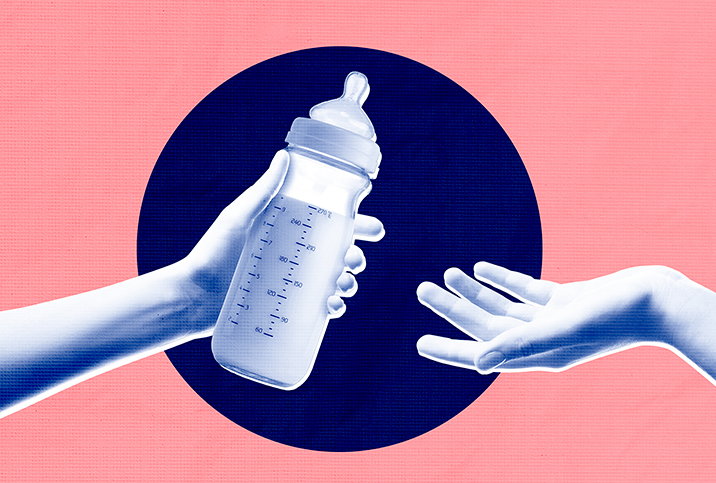About 48 percent of adults in the United States have some form of cardiovascular disease, according to the American Heart Association. The most common type of heart disease is coronary artery disease, which killed 382,820 Americans in 2020.
The Facts About Heart Disease
Find out how heart disease affects your sexual health.

Overview
One death every 34 seconds: That's the reality of heart disease in the U.S.
Heart disease comes in many shapes and sizes and can be congenital or acquired, but they all affect the organ's anatomy and/or capacity.
The heart has four chambers and four valves. The chambers are known as the left and right atria and the left and right ventricles. The four valves that connect these chambers are:
- The aortic valve. It allows blood to flow from the left ventricle to the aorta and prevents flow in the opposite direction.
- The mitral valve. It allows blood to flow from the lungs to the left atrium and prevents backward flow from the left ventricle to the left atrium.
- The pulmonary valve. It allows blood to pump from the right ventricle to the pulmonary artery and prevents flow in the opposite direction.
- The tricuspid valve. It allows blood to flow from the right atrium to the right ventricle and prevents flow in the opposite direction.
Heart disease can affect any anatomical area of the heart. Problems in the heart can affect every other bodily system.
Types of heart disease
Cardiovascular disease is an umbrella term for problems with the heart and blood vessels. All heart diseases are cardiovascular diseases, but not all cardiovascular diseases are heart disease.
When plaque builds up in the arterial walls over time, blood flow can be partially or completely obstructed. This condition is called atherosclerosis and it can affect arteries anywhere in the body, including the coronary arteries that supply the heart. This can contribute to the most common type of heart disease: coronary artery disease (CAD), also known as coronary heart disease.
While the heart is a single organ, a vast number of conditions can affect it and the rest of the cardiovascular system. Many of these conditions are linked to atherosclerosis, which most people develop with age. When atherosclerosis reaches the coronary arteries, which supply oxygenated blood to the heart, many complications may result. This is because deprivation of oxygen can cause death of different cardiac tissues and cells that are involved in the proper functioning of different, important parts of the heart.
For instance, if damage occurs to the cells responsible for electrical conduction and coordination of the ventricular contractions, patients can develop abnormal rhythm disorders. There can also be structural damage that can lead to defects or dysfunction of the valves or contraction, which can lead to heart failure.
The contributors to heart and cardiovascular disease are extremely nuanced and complex. Congenital issues may play a role for some patients, but for many people, heart disease results from atherosclerotic disease as a result of aging.
Symptoms
There's a long list of symptoms for different types of cardiovascular and heart disease. Symptoms of common heart conditions include:
- Arrhythmia. This involves an irregular heartbeat (palpitations) and a chest-fluttering sensation and can be a precursor to a heart attack.
- Heart attack. This presents as (but is not limited to) chest/upper body pain or discomfort, shortness of breath, heartburn, dizziness or extreme fatigue.
- Heart failure. This manifests as the swelling of limbs or neck veins, shortness of breath and fatigue.
Risk factors
People are more likely to develop heart disease if they have a personal or family history of it. Furthermore, babies are at elevated risk of heart disease if exposed to harmful substances in the womb, such as drugs, alcohol or other harmful chemicals. Diabetes—both type 1 and type 2—greatly increases the risks as well.
Lifestyle choices are major culprits in disease progression. Nutrient-poor diets, being overweight/obese and lack of exercise are strongly correlated to heart disease. Similarly, substance abuse and certain medications can do significant damage to the heart.
Causes
Cardiac diseases can be inherited, congenital or acquired.
Inherited heart diseases are passed down from previous generations, while congenital diseases are manifested at or before birth.
One less frequently discussed association is with mental health. For example, patients with chronic anxiety may have a higher risk of cardiovascular and heart disease, which may be due to a combination of both behavioral and physiological causes.
Substandard fitness regimens and diets contribute to high cholesterol and high triglycerides, which directly relate to heart disease. High blood pressure (hypertension) puts strain on the heart and greatly increases the risk of cardiac complications.
Infections are another important cause of heart disease and can have both chronic and acute manifestations depending on the pathogens responsible and what part of the heart they affect.
Prevention
Even if you're predisposed, efforts can be made to reduce the risk of—and even potentially prevent—the development of heart disease. Getting enough sleep allows our bodies time to recuperate and heal. Find an enjoyable exercise routine to strengthen the heart. Keep an eye on what you're eating and drinking, and make an effort to eat heart-healthy foods.
If you commonly experience anxiety or have mental health complications, seek support and possibly medical treatment. Avoid abusing alcohol, nicotine and recreational drugs, and use prescriptions only as directed.
Treatments
Depending on disease type and severity, along with personal factors such as age and medical history, there are numerous treatments for heart disease.
Initial efforts should be geared toward your lifestyle, but doctors may need to prescribe medications to alleviate symptoms or support other treatments. If those aren't enough, medical procedures or cardiac surgeries are the next best option. Some medical interventions include:
- Angioplasty
- Coronary bypass
- Heart valve repair/replacement
- Implant
- Transplant
It's important to undergo cardiac rehabilitation following any heart surgery or episode. This involves a triad of education about heart-healthy living, counseling and a fitness plan.
Medication side effects
Regardless of the condition, it's almost certain that a medication has been developed to treat either it or its side effects. However, to certain patient populations and in certain situations, prescriptions themselves have their own side effects or potential complications. For example, blood thinners (anticoagulants) and medicines that relax blood vessels are used to improve arterial passage but increase the risk and rate of bleeding and/or bruising.
Drugs used to reduce hypertension and heart rate can actually do the opposite and lead to other cardiovascular issues. Many heart disease medications share the side effects of dizziness, hypotension and gastrointestinal problems.
Diagnosis and testing
There are many diagnostic tests for heart and cardiovascular diseases. Chest X-rays and bloodwork are often the initial line of testing, but more invasive procedures and tools may be used once the source of the problem is identified:
- Cardiac catheterizations uncover arterial blockages.
- Computed tomography (CT) scans provide a 360-degree view of the torso.
- Echocardiograms pinpoint dysfunctional valves.
- Electrocardiograms (ECGs/EKGs) are used to reveal the heart's electrical signals and rate.
- Holter monitors are essentially long-term ECG/EKG devices that record the heart's rhythm.
- Magnetic resonance imaging (MRI) provides detailed pictures of the heart.
To gauge the heart's response to physical exertion, exercise/stress tests may also be performed.
Health solutions
You don't have to immediately pursue heart medications or surgery to improve your heart health. Blood pressure is reduced when we sleep, so deficiencies do not allow for the heart to have a reprieve from the strain of the day. Managing diabetes and blood sugar levels lessen the chance of atherosclerosis, as does exercise.
Psychological well-being is important for curbing heart disease, too. Physical contact and intimacy reduce stress hormones, such as cortisol, that impair circulation and lead to long-term heart complications. Even just laughing more can help because it increases endothelial wall elasticity and lowers blood pressure.
Heart health and erectile dysfunction
A significant amount of evidence supports a connection between erectile dysfunction (ED) and cardiac health. Not only can ED be a predecessor to future cardiovascular problems, but penile blood vessels are much smaller than cardiac ones, so they are susceptible to arteriosclerosis earlier.
Erections cannot be achieved without adequate blood flow, and loss of arterial elasticity only makes the process more cumbersome. There is also the potential for endothelial dysfunction, which occurs when the smooth muscle cells within the arteries are unable to relax and can lead to a lack of circulation in both the heart and penis.
Heart disease and menopause
One of the changes women go through during menopause is a decrease in estrogen levels. Usually available in abundance, the loss of this hormone has a negative impact on the heart because estrogen acts as armor for a woman's cardiovascular system. It boosts high-density lipoproteins (HDLs) and lowers low-density lipoproteins (LDLs)—the "good" and "bad" cholesterols, respectively. Estrogen aids blood circulation, too.
With this hormonal deficit comes the increased chance of having a stroke or heart attack about 10 years after menopause. Not only that, overheating—a common menopausal symptom—is connected to the potential for the same afflictions.
Heart health and sexual health
Sexual health has close ties to heart health. Intercourse relies on healthy blood flow to sexual organs. If blood vessels narrow and hinder circulation, libido and performance suffer greatly, furthering the likelihood of a negative psychological effect associated with sex. People who have recently undergone a cardiac procedure or event are particularly vulnerable, as they have restrictions on intensive cardiovascular activities.
Women's heart health
Although not as many women die from heart disease as men, it is still the cause of 1 in 5 female deaths. Women have higher rates of mortality within a year of a cardiac episode and have mild symptom variation compared to males regarding heart attacks and disease.
Along with unisex heart attack signals, women can also have the following:
- Abdominal pain
- Angina
- Gastrointestinal upset
- Loss of consciousness
- Tiredness
Pain in the upper abdomen, torso, throat, neck and jaw has been reported as well.
Another difference is the prognosis following heart surgery: Females have an elevated risk of infections or other consequences.
Men's heart health
Men are more likely to suffer from fatal heart disease, which is attributed to 1 in 4 male deaths.
Unlike women, half of the sudden deaths in men due to coronary heart disease present no prior symptoms. Due to differences in reproductive systems, men are not affected by the cardiac vulnerability women experience during and after menopause, though they do fall prey to erectile dysfunction.
Furthermore, males are less likely to experience mental health conditions, such as eating disorders, anxiety and depression, which are often comorbid and conjointly related to heart disease.
Outlook
The outlook for heart disease is diverse, depending on disease severity, personal health history and efficacy of medical procedures. In some cases, all you can do is minimize symptoms leading up to death. Other times, surgeries, implants and transplants are enough to treat the heart disease, and after cardiac rehabilitation, life can return to semi-normalcy.
Whether or not a surgical operation is appropriate, medications have shown to be extremely helpful in controlling chronic heart diseases when taken correctly and under the supervision of a doctor. Together with your healthcare provider, you should be able to work up strategies for the best course of treatment tailored to your specific needs.
Living with heart disease
Heart disease is the leading cause of death for women and men across the majority of ethnicities and races in the United States. Against that terrifying reality, there are numerous treatment options. You can work independently or alongside a medical team.
Take care of your heart by practicing a cardio-friendly lifestyle, including smoking cessation, a healthy diet and consistent exercise. Work closely with your doctor(s) and follow treatment.
FAQs
What are the most common heart complications?
The most common type of heart disease is coronary artery disease (CAD), a result of an overabundance of plaque that, over time, can partially or completely obstruct blood flow. This is known as atherosclerosis.
Other categories are structural heart diseases, heart rhythm disorders and heart failures. Structural diseases are caused by anatomical defects, heart rhythm disorders are a result of an abnormal heartbeat, and heart failures primarily happen because of high blood pressure (hypertension) and heart attacks.
What are the warning signs of heart disease?
Heart attack, arrhythmia and heart failure are the main warning signs of heart disease. Heart attack presentation includes (but is not limited to) chest/upper body pain or discomfort, shortness of breath, heartburn, dizziness or extreme fatigue.
Arrhythmia involves palpitations and a chest-fluttering sensation, and can be a precursor to a heart attack. Be mindful of life-threatening signs of heart failure, like the swelling of limbs or neck veins, shortness of breath and fatigue.
Is heart disease treatable?
Yes, there are numerous treatments for heart disease. Initial efforts should be geared toward your lifestyle habits, but doctors may need to prescribe medications to treat symptoms and prevent progression. If those aren't enough, then medical procedures—such as coronary bypass, angioplasty, heart valve repair/replacement, implant or transplant—are the next best option.
Following any heart surgery or episode, it's important to undergo cardiac rehabilitation. This involves a triad of education about heart-healthy living, counseling and a fitness plan.












